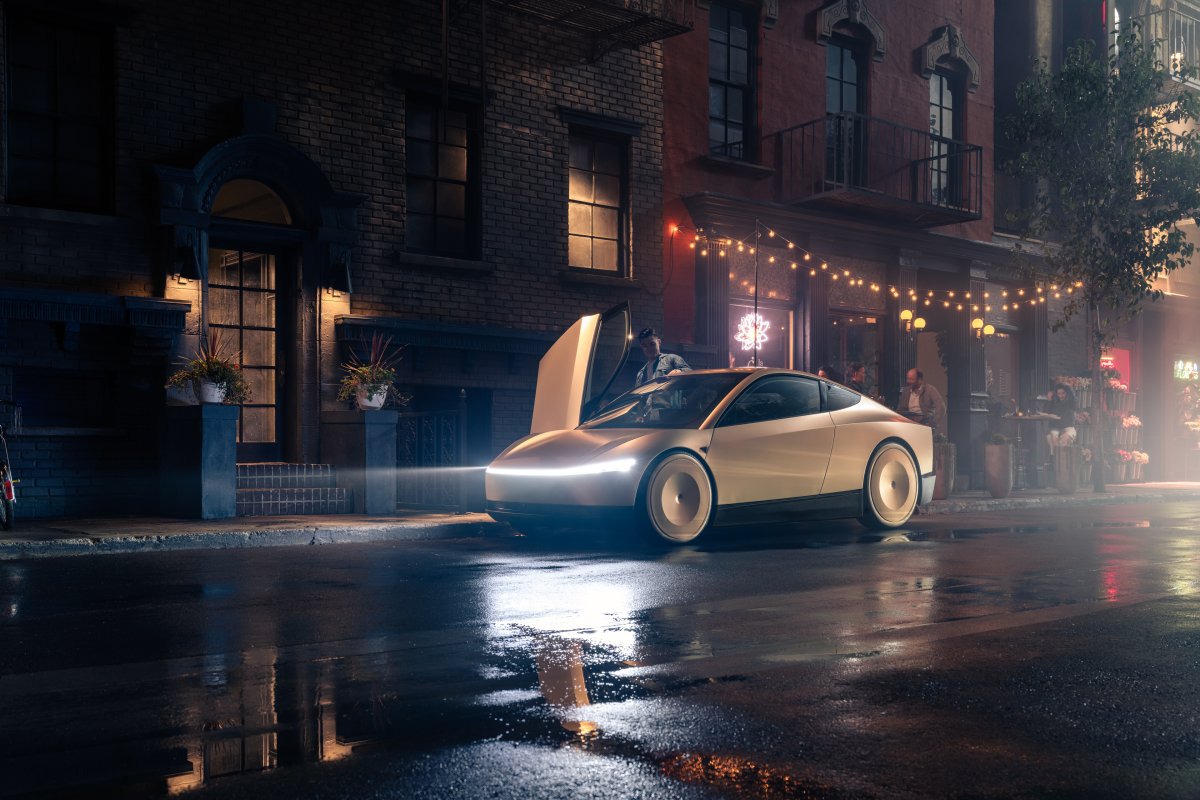테슬라, 6월에 로봇택시 네트워크 출시: 기대할 수 있는 사항과 차량 추가 가능 시기

테슬라는 꽤 오랫동안 FSD 언수퍼바이즈드, 즉 손을 떼고 눈을 떼지 않는 버전의 FSD를 개발해왔습니다. 이는 사용자의 개입 없이 도로에서 눈을 떼거나 운전대에서 손을 떼지 않고도 A 지점에서 B 지점까지 이동할 수 있는 동일한 버전의 FSD입니다.
2025년 6월은 Tesla가 차량 자율성의 다음 단계로 언감독 FSD를 공개적으로 도입하는 날이며, Tesla의 2024년 4분기 실적 발표에서 발표된 내용을 자세히 살펴봅시다.
로봇택시 차량 출시일
앱에서 로봇택시를 호출하는 것부터 도착 방법, 여행 진행 방식, 하차 장소, 결제 방법까지 전체 경험을 처음부터 끝까지 개선할 것입니다. Tesla의 로보택시 앱 목업에서 볼 수 있듯이 광범위한 시스템 세트이며, 그 중 일부는 이미 구축되어 있을 수도 있습니다.
테슬라는 FSD 무감독의 초기 배포를 엄격하게 통제하고 있으며, 그럴 만한 이유가 있습니다. 사소한 사건이나 사고 하나가 급격한 규제 문제로 확대될 수 있기 때문입니다. Tesla는 완전한 자율 주행에 조심스럽게 발을 담그고 있으며, 비감독 FSD가 일반 운전자보다 훨씬 안전하다는 확신이 들면 Tesla 소유자에게 확대 적용할 수 있습니다.
Tesla는 또한 캘리포니아 및 미국의 다른 지역에서 규제 승인을 획득하는 대로 비감독 FSD를 출시할 예정입니다. Tesla의 FSD는 일반화된 솔루션으로, 출시 전에 고정밀 또는 HD 매핑과 현지 준비가 필요하지 않으며, 대신 Tesla의 가장 큰 걸림돌은 안전과 소프트웨어 개선입니다.
로봇택시 네트워크 출시에 가까워지면서 퍼즐에 실제로 얼마나 많은 단계가 있는지 깨닫게 됩니다. Tesla는 차량이 멈추거나 누군가 비상 버튼을 누르거나 심지어 사고가 발생하는 등의 문제에 대처하는 절차를 마련해야 합니다. 테슬라는 또한 차량 청소 및 충전에 반응하는 차량 허브를 출시해야 합니다.
사람들은 삼진아웃이나 경고음이 울리지 않도록 휴대전화를 확인하기 위해 수동 운전으로 전환한 다음 다시 FSD로 돌아갑니다.
2025년 6월은 자율주행 서비스를 출시하기에는 다소 공격적으로 보일 수 있지만, 테슬라가 지나치게 낙관적이고 공격적으로 기한을 잡는 것이 일반적이지만, 비감독 FSD 출시 시기를 더 잘 알 수 있습니다. 6월 출시를 놓치더라도 올해 안에 네트워크가 시작되기를 바라며, 이는 테슬라와 주주들에게 큰 힘이 될 것입니다.
로봇택시 차량에 언제 합류할 수 있나요?
테슬라는 로봇택시를 허용하는 도시에서 소유주가 자신의 차량을 등록할 수 있도록 허용할 예정이므로 오스틴이나 승인된 테슬라 로봇택시 네트워크가 있는 다른 도시에 거주하는 경우 차량을 로봇택시 차량에 추가하는 데 돈을 받을 수 있습니다.
실적 발표에서 테슬라는 2026년에 로봇택시 차량에 차량을 추가할 수 있다고 발표했지만 그보다 더 구체적으로 밝히지 않았습니다. 이는 로봇택시 네트워크가 출시된 지 최소 6개월 후가 될 것입니다.
엘론은 실적 발표에서 고객 차량에 FSD 무인 운행을 허용하기 전에 부상이나 사고의 확률이 극히 낮다는 확신이 있어야 한다고 언급했습니다. 자율 주행 차량에 대해 자주 제기되는 질문인 책임에 대해서는 언급하지 않았다는 점이 흥미롭습니다.
테슬라의 AI 담당 부사장인 아쇼크 엘러스와미와 엘론이 모두 언급한 점 중 하나는 경미한 사고가 한 건이라도 발생하면 전 세계적으로 헤드라인 뉴스가 되지만, 연간 평균 4만 명의 운전자가 일반 교통 사고로 사망하고 그 중 대부분은 지역 뉴스에도 나오지 않는다는 것이었습니다.진정한 자율성은 사고 발생에 대한 책임이 차량/소프트웨어 제조업체와 차량 소유자 중 누구에게 있는지에 따라 달라지기 때문에 2026년에 실제로 책임과 보험에 어떤 일이 일어날지는 지켜봐야 할 것입니다.
h2>소유자를 위한 감독 없는 FSD
FSD(U)는 Tesla가 차량으로 테스트하는 동안 처음에는 사용자에게 제공되지 않을 것입니다. Tesla가 필요한 수준의 안전성을 확보하기 위해 충분한 테스트를 완료하면 소유주에게 FSD(U)를 배포하기 시작할 것입니다. Tesla는 2026년에 차량 소유자가 자신의 차량을 로봇택시 차량에 추가할 수 있도록 할 예정이므로 차량 소유자를 위한 FSD(U)는 이 날짜 이후 언젠가 출시될 것으로 예상합니다.
테슬라가 차량을 관리하는 동안 차량에 대한 통제력을 강화할 수 있으므로 Tesla 소유자를 위한 FSD(U)는 2026년 후반 또는 2027년에 출시되는 것이 합리적일 것입니다.
테슬라는 일반 운전자보다 한 단계 높은 안전 수준을 목표로 하고 있습니다. 현재 < href="https://www.notateslaapp.com/news/2349/tesla-continues-to-reduce-crashes-per-mile-in-latest-vehicle-safety-report">4분기 차량 안전 보고서에 따르면 일반 운전자는 평균 70만 마일마다 사고가 발생하는 반면, Tesla는 평균 108만 마일마다 한 건씩 사고가 발생합니다. FSD 또는 오토파일럿을 사용하면 이 수치는 594만 마일로 크게 증가합니다. Tesla는 이 수치를 700만 마일에 가깝게 만드는 것을 목표로 하고 있으며, FSD(U)를 한 단계 더 확장할 예정입니다.
그리고 Elon이 실적 발표에서 다음과 같이 말했기 때문에 이 기능을 기꺼이 활성화할 것 같습니다: “사람들은 삼진아웃/비프음을 듣지 않기 위해 수동 운전으로 가서 휴대폰을 확인한 다음 FSD로 돌아갑니다.”
그리고 사람들이 그렇게 하지 않으면 훨씬 더 안전할 것이라는 것은 꽤 사실입니다. 이제 차량에 FSD(U)를 장착하는 것은 시간 문제일 뿐입니다. 테슬라가 2025년에 어떻게 빨간 테이프를 잘라내는지 지켜보겠습니다!
출시 단계
테슬라는 결국 신속한 배포를 방해하는 규제 장애물을 극복해야 할 것입니다. 테슬라는 2025년 말까지 미국 전역에 로봇택시 차량과 함께 FSD 무인운행을 배치하고 2026년에는 캐나다에 도입할 수 있기를 희망합니다.
테슬라는 이미 규제 승인을 획득한 텍사스주 오스틴에서 시작하여 다음 달에 미국 내 다른 도시로 이동할 것입니다.
현재 Tesla는 프리몬트에서 차량이 생산 라인에서 출고장까지 스스로 운전하는 무인 FSD를 주로 사용하고 있으며, LA 시내에서는 안전 운전자와 함께 직원들을 시내로 이동시키는 테스트를 진행 중입니다. 그리고 공장에서는 매일 수천 대의 차량이 생산 라인에서 출고장으로 이동하면서 안정적으로 매일 일어나고 있습니다.
테슬라가 FSD(U)를 여러 단계에 걸쳐 출시할 것으로 예상되며, 잠재적으로는 다음과 같은 모습일 것입니다:
FSD(U)를 내부적으로 테스트(현재 진행 중)
정밀화를 위해 소규모 지역에서 로봇택시 네트워크 출시
네트워크 확장 및 개선
테슬라 소유가 아닌 차량도 참여 허용
테슬라 소유자에게 Tesla가 차량에 대한 통제력을 덜 갖는 무감독 FSD 제공
많은 분들이 그렇듯, 저희는 2019;테슬라의 로봇축을 처음으로 야생에서 볼 수 있게 되어 정말 기쁩니다. Tesla의 다른 모든 제품과 마찬가지로 FSD(U)의 출시는 소규모로 시작하여 점차 확대될 것으로 예상합니다. 처음에는 오스틴의 직원들로만 구성되거나 안전 드라이버가 포함될 수도 있고, 아주 작은 지역으로 제한될 수도 있습니다. 처음에는 실망하는 분들도 계실 수 있지만, Tesla가 기능을 출시하는 방식을 기억하세요. 반복과 개선은 일관되고 빠르게 이루어질 것입니다.

